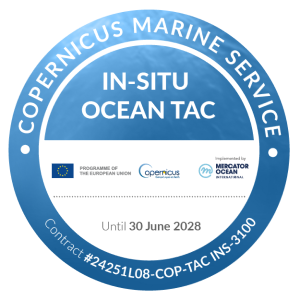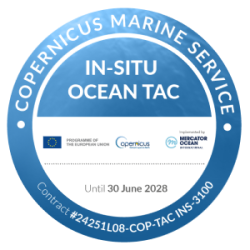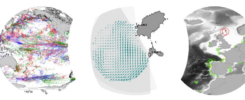Two new in-situ observation products with seawater inorganic carbon measurements are now available on the Copernicus Marine Service from April 2019: one near-real time (INSITU_GLO_CARBON_NRT_OBSERVATIONS_013_049) and one reprocessed product (INSITU_GLO_CARBON_REP_OBSERVATIONS_013_050).
The near-real time product contains in-situ measurements of surface fugacity of carbon dioxide (fCO2), sea surface temperature and sea surface salinity, automatically first level quality-controlled by the software QuinCe. The data come from platforms with NRT capabilities that belong to the Research Infrastructure Integrated Carbon Observing System (ICOS) Ocean Thematic Center (OTC) network. As of April 2019, these platforms are the research vessel G. O. Sars and the Voluntary Observing Ship/ Ship of Opportunity (VOS/SOOP) Nuka Arctica.
The reprocessed product contains data from two data products generated by the global marine biogeochemistry community: Surface CO2 ATlas version 6 (SOCAT) and GLobal Ocean Data Analysis Product version 2 (GLODAP), split into five datasets:
- SOCAT-REP-OBSERVATIONS: measurements of sea surface fCO2, temperature and salinity from ships, fixed moorings and drifting buoys from 1957 to 2017.
- SOCAT_REP_GRIDDED_FIELDS: monthly, annual, and decadal 1×1 degree gridded fields of the SOCAT observations. Weighted and unweighted means, standard deviations, minimum and maximum values of sea surface fCO2, temperature and salinity, position offsets and number of observations per cell.
- SOCAT_REP_GRIDDED_COASTAL_FIELDS: monthly quarter-of-degree gridded fields of coastal areas, defined as regions within 400 km of significant landmasses. Same variables as the global gridded dataset.
- GLODAP_REP_OBSERVATIONS: measurements of temperature, salinity, dissolved inorganic carbon, total alkalinity, pH, oxygen, nitrate, phosphate and silicate from individual water samples from vertical profiles. Temporal coverage from 1972 to 2013.
- GLODAP_REP_GRIDDED_FIELDS: 1×1 degree and 33 standard depths climatology built from GLODAPv2 data. In addition to the GLODAP observations, a climatology for calcium carbonate saturation was computed, too.
All the reprocessed datasets have been thoroughly quality controlled by specialist scientists within the field and the region. Further details to be found in the publications recommended in their respective webpages.
The Copernicus Marine Service documentation for these two products is available in: PUM | NRT-QUID | REP-QUID



